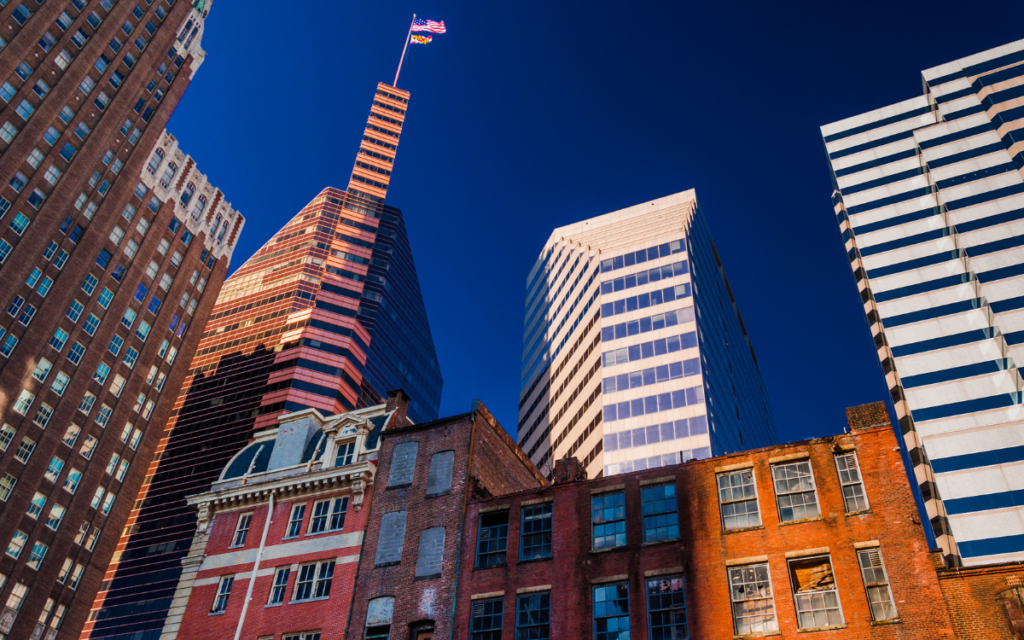
Businesses and residents took flight from major cities as the impact of the pandemic set in, to escape crowded buildings and streets. Now, Baltimore is among the many mid-sized cities searching for compelling ways to lure people back. This topic was recently addressed by civic and educational leaders during the “The Future of Cities” webinar presented by the Baltimore Business Journal and sponsored by The Howard Hughes Corporation.
“Baltimore is nothing if not resilient and it has emerged from worse crises before and, in many respects, what we are experiencing has been an accelerant of things already in the works,” explained Seema Iyer, PhD, Director of Baltimore Neighborhood Indicators Alliance for the University of Baltimore. “The city needs to focus on difficult things such as creating digital equality, as 22% of all households in Baltimore do not have access to the Internet. In certain neighborhoods, 40% have no access. That type of divide is not sustainable as there is a limit to what a person can learn without this access. We also need to accomplish the easy things. That includes repaving tennis and basketball courts and making sure streetlights are in place and work. Visitors pay attention to these small details and they are all important to the overall image of Baltimore.”
Annie Milli, Executive Director of Live Baltimore, said the city is “entering an era in which Baltimore will have every opportunity to shine and thrive because the city is affordable. There is a national exodus from major cities because businesses and people cannot afford to operate and live where they are. When exploring alternatives, they see Baltimore with its waterfront, many colleges, unique neighborhoods and micro markets. We have housing that serves a diverse set of needs and our existing talent pool is already deep.”
“Proximity to the federal government is typically touted as among our major attributes and Baltimore needs to reinforce this,” explained Colin Tarbert, President and CEO, Baltimore Development Corporation. “Baltimore resides within the eighth most educated region in the United States and our biosciences and medical community continues to attract young talent. This age group is nimble and mobile and more interested then ever in leaving densely-populated cities in favor of more manageable urban areas such as ours.”
But to thrive, the city will need to address one long-standing challenge – transportation.
“Baltimore cannot be a city in which you rely on a car to get to work and move around,” said Dr. Daraius Irani, Vice President of Strategic Partnerships and Applied Research, Towson University. “This will require the complete reshaping of the transportation network and to make it less complicated to use the mass transit network.”
Karen Cherry, Vice President of Office Leasing for The Howard Hughes Corporation, stressed that Baltimore’s traditional strengths could help it succeed after the pandemic.
“The entire region has the opportunity to reset in the post-COVID era, as well as to thrive and grow using innovation and resourcefulness,” Cherry said. “Baltimore has been an urban leader in its past history and we have the talent and fundamentals to become a natural model for renewal once again.”